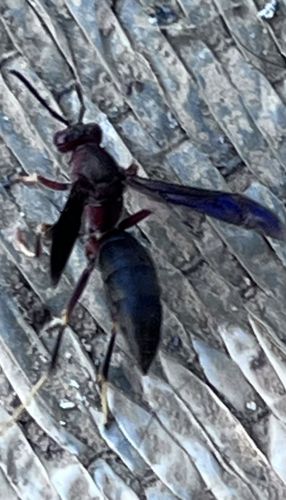Great Golden Digger Wasp
Scientific Name: Sphex ichneumoneus
Order & Family: Hymenoptera, Sphecidae
Size: 1.8 to 2.8 cm (0.7 to 1.1 inches)

Natural Habitat
Open sandy areas, meadows, lawns, gardens, and along woodland edges where they can dig their burrows and find prey.
Diet & Feeding
Adults feed on nectar from various flowers. Larvae feed on paralyzed katydids or crickets that the female wasp captures and provisions in her burrow.
Behavior Patterns
Solitary wasps; females dig burrows in the soil where they lay an egg on a paralyzed prey item (cricket or katydid) to feed the developing larva. They are often seen flying low over vegetated areas in search of prey. Males patrol territories to find females.
Risks & Benefits
Potential risk: Can sting if provoked or threatened, though they are generally not aggressive towards humans. Benefits: Important pollinators as adults visit flowers for nectar. They also help control cricket and katydid populations, which can be beneficial in gardens and agricultural settings.
Identified on: 11/16/2025